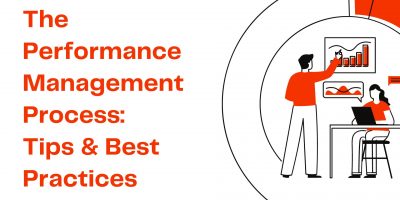
The Four-Day Work Week: Pros & Cons
Explore the four-day work week, a novel company perk that can potentially lead the new workforce revolution and change the workplace as we know it.

Measuring employees’ performance is a common practice in every strong company. It gives managers a closer look at their team’s performance and individual input.
The most crucial thing in the employees’ performance management process is to look at the details and patterns and not statistics. Because statistics sometimes don’t paint the whole picture. Although the employees’ grades may be a proxy for it, it’s not a perfect measuring system.
The main focus should be to identify if the employee understood the process and developed an interest or passion for their role in the company.
Employee evaluation requires a proactive approach from the company’s management structure that monitors the performance throughout the year. Hence, if the goal is to build a high-performance culture, managers will need to invest more time into the process by adopting a more systematic and manageable performance evaluation process.
This way, they can maintain accuracy and instantly resolve challenges before they become a problem. The question is, what is the ideal performance management process that delivers high-end results?
According to Michael Armstrong in his Handbook of Performance Management, any HR professional can achieve this goal by following these four stages:
It is essential to know that these stages do not follow one after another, but they are a cycle. Hence, they should be continuous throughout the year.
Performance management is an integral part of running a business.
The review process helps managers communicate strategic goals and align the needs of the employees with the organization. Moreover, it provides them with insight into current performances. Hence, management can facilitate corrective actions for improvement and organizational change.
For employees, the performance management process clarifies the success criteria. It can increase motivation to perform and boost the employee’s self-esteem when their performance is good. It also provides them with a benchmark for improvement.
For both sides to be satisfied, the performance management process needs to have a perpetual flow.
In the 1990’s Rober Cupler and David Norton noted that companies have a very unbalanced perspective of employee appraisals. Businesses were focused on financial measurements, not on employees’ capabilities. As a response, they proposed the “Balanced Scorecard.”
The balanced scorecard uses four perspectives for employee appraisal:

The balanced scorecard reminds companies that the financial reviews are dependent on how a company uses its assets to meet demand.
Peter Drucker, one of the most influential management thinkers in the last decade, proposed a way of management based almost entirely on performance management. He called it “Management by Objectives.” According to him, a KPI-driven organizational structure needs to account for employees’ needs as much as it accounts for its customers.
Today many companies have adopted highly effective performance management systems that help them develop and maintain a positive performance evaluation process.
These are the best practices that successful companies frequently use:
A well-established performance management process combined with excellent performance management software that streamlines and simplifies the process is the perfect combination for a strong company. A happy employee can go a long way for an organization to succeed.
Browse our curated list of vendors to find the best solution for your needs.
Subscribe to our newsletter for the latest trends, expert tips, and workplace insights!

Explore the four-day work week, a novel company perk that can potentially lead the new workforce revolution and change the workplace as we know it.

From identification through mitigation to monitoring and reporting – master the techniques to ensure successful project outcomes.

Explore actionable insights and expert advice to streamline your performance management process for enhanced employee productivity and organizational excellence.

Discover how, if done correctly, effective performance management can benefit both employers and employees.
Shortlister Connect is a tool specifically designed to be utilized by the HR and Procurement/Sourcing teams within mid-size, large and jumbo employers. Shortlister Connect allows these teams to efficiently research & identify their optimal vendor partners, track existing vendor relationships & performance and “connect” with other employers to share successes and vendor experiences.
If you are not on the HR or Procurement/Sourcing team within an employer with over 200 employees, you will not be granted access to Connect. Examples of individuals that would not be granted access include, but are not limited to: vendors, students, practitioners, researchers, other non-employers or anyone that is unwilling to identify themselves will not pass our vetting criteria. If you are a consultant, Shortlister offers a specialized product for consultants, called Shortlister Select. You can email Tom Ciccotti at tciccotti@myshortlister.com to learn more about Shortlister Select.
***Shortlister retains the exclusive right to grant or deny access to any party to ensure the privacy of the vendors in our system.
Please login with your LinkedIn Credentials
Used by most of the top employee benefits consultants in the US, Shortlister is where you can find, research and select HR and benefits vendors for your clients.
Shortlister helps you reach your ideal prospects. Claim your free account to control your message and receive employer, consultant and health plan leads.